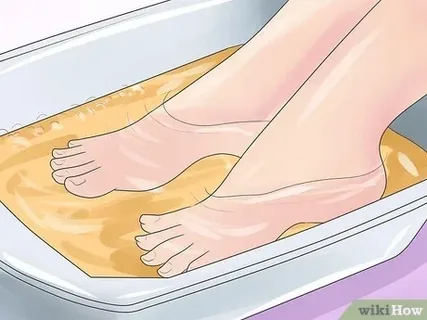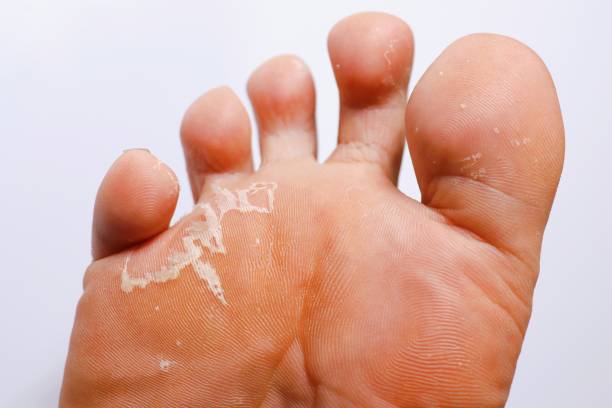Best Athlete’s Foot Treatment Guide: Home Remedies That Work
Are you struggling with persistent itching and burning between your toes? That uncomfortable sensation might be athlete’s foot, and you’re not alone. The good news? Most cases can be effectively treated at home with the right approach and consistent care.
Quick Takeaways
- Most athlete’s foot cases clear up within 2-4 weeks with proper treatment and preventive measures
- Over-the-counter antifungal medications are effective for 90% of cases when used correctly
- Early intervention significantly reduces treatment time and prevents spread to other areas
- Proper foot hygiene and preventive measures can stop recurrence in most cases
Why Treating Athlete’s Foot Matters
Athlete’s foot isn’t just an inconvenience – it’s a fungal infection that can spread and worsen if left untreated. Recent research indicates that up to 25% of people develop athlete’s foot at some point in their lives. Health experts note that untreated cases can lead to bacterial infections, spread to other body parts, or affect other people in your household.
Medical research suggests that treating athlete’s foot promptly can prevent weeks of discomfort and reduce the risk of complications by up to 70%. Moreover, proper treatment helps prevent the infection from spreading to toenails, which can be much more difficult to treat.
Getting Started With Treatment
Before beginning treatment, ensure you:
- Clean and thoroughly dry your feet, especially between the toes
- Identify the affected areas and note any unusual symptoms
- Have necessary supplies ready (antifungal medication, clean socks, separate towels)
Step-by-Step Treatment Guide
Step 1: Initial Care and Cleaning
- Wash feet thoroughly with soap and warm water
- Dry completely, paying extra attention between toes
- Use a clean towel designated only for infected areas
Step 2: Medication Application
- Apply antifungal medication as directed on the package
- Cover entire affected area and slightly beyond
- Maintain treatment for the full recommended duration, even if symptoms improve
Step 3: Preventive Measures
- Wear breathable cotton socks
- Change socks at least once daily
- Use antifungal powder in shoes
- Allow shoes to dry completely between uses
Common Mistakes to Avoid
- Stopping treatment too soon – Continue treatment for 1-2 weeks after symptoms disappear
- Sharing towels or shoes with others during infection
- Walking barefoot in public areas
- Wearing damp socks or tight, non-breathable shoes
- Scratching affected areas, which can spread the infection
Progress Tracking Tips
Monitor your progress by:
- Taking photos of affected areas daily
- Keeping a symptom diary
- Noting any spread or improvement
- Tracking treatment application times
When to Seek Professional Help
Consult a healthcare provider if:
- Symptoms persist after 4 weeks of treatment
- The infection spreads significantly
- You develop fever or severe pain
- You have diabetes or a weakened immune system
- Blisters or open sores develop
Frequently Asked Questions
What is the fastest way to cure athlete’s foot?
The quickest resolution comes from combining proper medication with good foot hygiene. Start treatment immediately with an over-the-counter antifungal medication, keep feet dry, and change socks frequently. Most cases show improvement within days when treated properly.
What is the best medicine for athlete’s foot?
Health experts recommend starting with over-the-counter antifungal medications containing terbinafine, miconazole, or clotrimazole. These medications come in various forms – creams, sprays, or powders – and are equally effective when used as directed.
What is the main cause of athlete’s foot?
Athlete’s foot is caused by dermatophytes, fungi that thrive in warm, moist environments. Common sources include:
- Damp locker rooms and shower areas
- Shared pool areas
- Sweaty shoes and socks
- Direct contact with infected surfaces
Conclusion
Athlete’s foot is highly treatable with proper care and consistency. Start treatment at the first sign of symptoms, maintain good foot hygiene, and follow preventive measures to avoid recurrence. Remember, early intervention is key to quick relief.
Take action today by assessing your symptoms and starting appropriate treatment. If you’re unsure about your condition or treatment options, consult with a healthcare provider for personalized advice.
Medical Disclaimer: This article is for informational purposes only and does not constitute medical advice. Always consult with a qualified healthcare provider for diagnosis and treatment of medical conditions.

